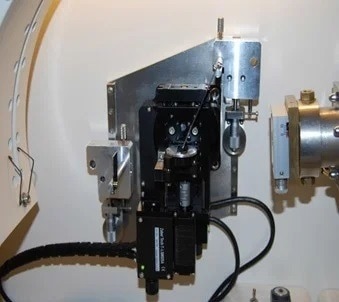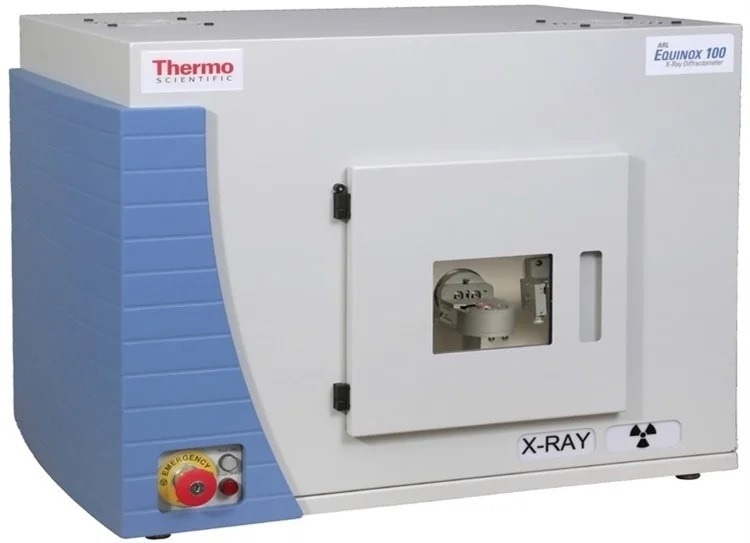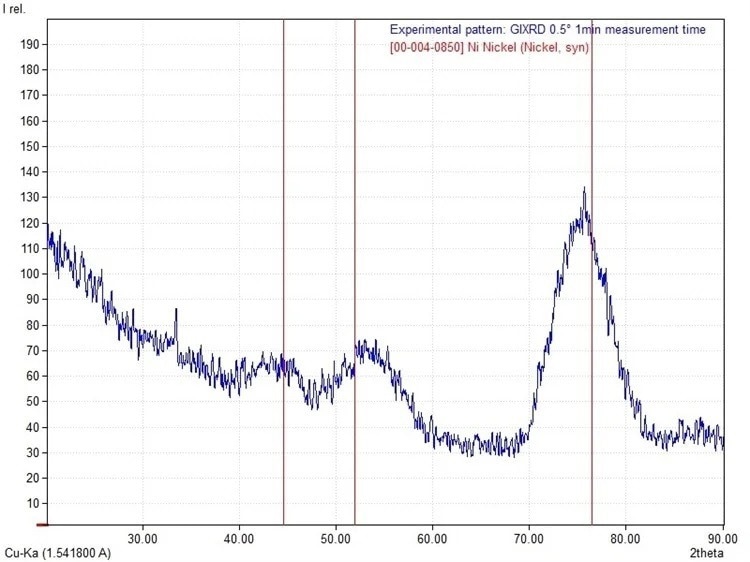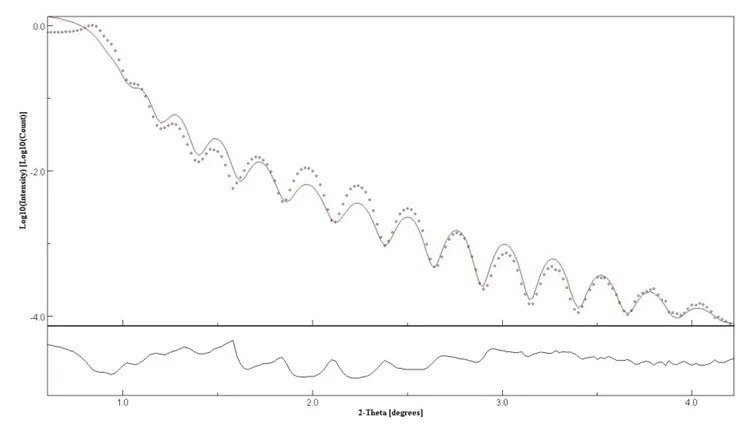X-Ray diffraction is one of the most commonly-used structural analysis techniques for the characterization of thin films/layers and coatings. In both research and industrial laboratories, demand is growing as a result of the development of a large variety of applied materials.
For instance, such materials are used as materials for generating light in Lasers and LEDs, as photovoltaic collectors for green energy harvesting, or within advanced optical applications.
The crystallographic structure of multi-functional inorganic and hybrid organic-inorganic thin films (nanometer scale) can be organized by GIXRD (Grazing Incidence XRD). Given that optical and electronic properties are significantly influenced by the compound structure, this is essential. To exclusively measure not the substrate, but the layer, GIXRD, a fixed gracing angle (~0.5° – 2° Ω) is used.
The thickness of certain layers is another parameter to consider in the design of thin film materials for several applications. X-Ray reflectometry (XRR) is based on the interference between X-Rays reflected on different layers in the material and is a standard method used to determine the thickness of thin layers.
Instrument
A range of different instruments is included in the Thermo Scientific™ ARL™ EQUINOX Series portfolio, from simple, user-friendly bench-top systems designed for routine analysis to the more sophisticated high-performance, research grade, floor-standing systems.
A custom designed 15 W Co or 50 W Cu high-brilliance micro-focus tube with mirror optics is used by the Thermo Scientific™ ARL™ EQUINOX 100; no external water chiller is required. Computer-controlled ω and z movement for the alignment and measurement of samples is offered by the thin film attachment (cf. Figure 1).

Figure 1. Thin Film Attachment. Image Credit: Thermo Fisher Scientific - Elemental Analyzers and Phase Analyzers
This benchtop instrument can be transported into the field or between laboratories without the need for special infrastructure.
More rapid data collection is provided by the ARL EQUINOX 100 (Figure 2) in comparison to other diffractometers, thanks to its unique curved position sensitive detector (CPS). The CPS is suitable for fast screening of thin film samples using GIXRD, and it is able to simultaneously measure all diffraction peaks in real-time.

Figure 2. ARL EQUINOX 100 diffraction system. Image Credit: Thermo Fisher Scientific - Elemental Analyzers and Phase Analyzers
Experiment
An ARL EQUINOX 100 (CuKα radiation: 1.541874 Å) was used to carry out the measurement of Ni on Si substrate sample (1 layer, 306.9 Å thickness; AXO), after careful alignment of z and ω. SYMPHONIX (data processing), MAUD (XRR data refinement), and MATCH! equipped with the COD database (qualitative phase analysis) were all used for data processing and evaluation.
Results
To investigate the crystallographic structure of the Ni layer, GIXRD was used. Later, the XRD pattern was compared with a database (COD) which facilitates the assignment of the common Ni structure type (space group Fm3m, a = 3.5238 Å) following 1 minute of measurement time (cf. Figure 3).
A model containing the Si substrate, a buffer layer, and the final Ni layer compared to air was arranged in order to refine the XRR data, and all parameters were refined independently in the concluding step. An adequate fit was yielded by the model (cf. Figure 4 and Table 1).
There was a 5% deviation between given and refined thickness – an acceptable value for a benchtop system.

Figure 3. GIXRD pattern (20 - 90°2θ grazing angle 0.5°). Image Credit: Thermo Fisher Scientific - Elemental Analyzers and Phase Analyzers

Figure 4. XRR pattern (black; 0 - 4°2θ) with fit (red); Intensities in logarithmic scale. Image Credit: Thermo Fisher Scientific - Elemental Analyzers and Phase Analyzers
Table 1. Results of XRR refinement. Source: Thermo Fisher Scientific - Elemental Analyzers and Phase Analyzers
| . |
. |
| Rwp |
0.042 |
| χ2 |
2.47 |
| Thickness (in Å) |
320.7(11) |
| Roughness (in Å) |
3.78(32) |
Conclusion
A full GIXRD scan was acquired within a measurement time of 1 minute with the help of the ARL EQUINOX 100, rendering it possible to differentiate between the amorphous/crystalline character of the sample or various types of structures. As a rather straightforward procedure, sample alignment does not require an operator with advanced experience.
Thanks to the almost parallel beam generated by the X-Ray mirror optics of the ARL EQUINOX 100, even XRR measurements are possible. It is, therefore, possible, thanks to the evaluation of the measurement, to determine layer thicknesses with reasonable precision.
A user-friendly system, the ARL EQUINOX 100 coupled with the thin layer attachment is ideal for use in basic thin film/coating investigations in industrial as well as academic research. The ARL EQUINOX 100 allows for rapid and convenient QC/QA procedures, even for traditional operators.

This information has been sourced, reviewed and adapted from materials provided by Thermo Fisher Scientific - Elemental Analyzers and Phase Analyzers.
For more information on this source, please visit Thermo Fisher Scientific - Elemental Analyzers and Phase Analyzers.